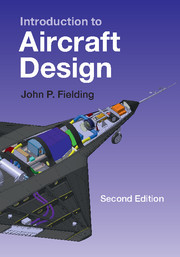Description
Introduction to Aircraft Design (2nd Ed.)
Cambridge Aerospace Series
Author: Fielding John P.
This new edition provides a modern, accessible introduction to the whole process of aircraft design together with invaluable data.
Language: English
Approximative price 56.06 €
In Print (Delivery period: 14 days).
Add to cart
Publication date: 04-2017
302 p. · 17.8x25.3 cm · Paperback
302 p. · 17.8x25.3 cm · Paperback
Description
/li>Contents
/li>Biography
/li>
The new edition of this popular textbook provides a modern, accessible introduction to the whole process of aircraft design from requirements to conceptual design, manufacture and in-service issues. Highly illustrated descriptions of the full spectrum of aircraft types, their aerodynamics, structures and systems, allow students to appreciate good and poor design and understand how to improve their own designs. Cost data is considerably updated, many new images have been added and new sections are included on the emerging fields of Uninhabited Aerial Vehicles and environmentally-friendly airlines. Examples from real aircraft projects are presented throughout, demonstrating to students the applications of the theory. Three appendices and a bibliography provide a wealth of information, much not published elsewhere, including simple aerodynamic formulae, an introduction to airworthiness and environmental requirements, aircraft, engine and equipment data, and a case study of the conceptual design of a large airliner.
1. Introduction; 2. Why should we design a new aircraft?; 3. Why is it that shape? - civil aircraft; 4. Why is it that shape - other types; 5. What's under the skin? - structure and properties; 6. What's under the skin? - airframe systems; 7. What's under the skin? - avionics, flight control and weapons systems; 8. Why do aircraft cost so much?; 9. What help can I get? - bibliography and computer-aided design; 10. The shape of things to come - should the project continue?; 11. What can go wrong? - some lessons from past aircraft projects, and a glimpse into the future; Appendix A. Useful aircraft design data; Appendix B. A-90 parametric study. Example. The A-90 500-seat airliner; Appendix C. The prediction of aircraft reliability and maintainability targets; References; Index.
John Fielding is Professor Emeritus and the former Head of the Aerospace Engineering Group in the School of Engineering, Cranfield University, UK. His research, teaching and continuing consulting focused on aircraft design, reliability, maintainability and operational effectiveness.
© 2024 LAVOISIER S.A.S.




